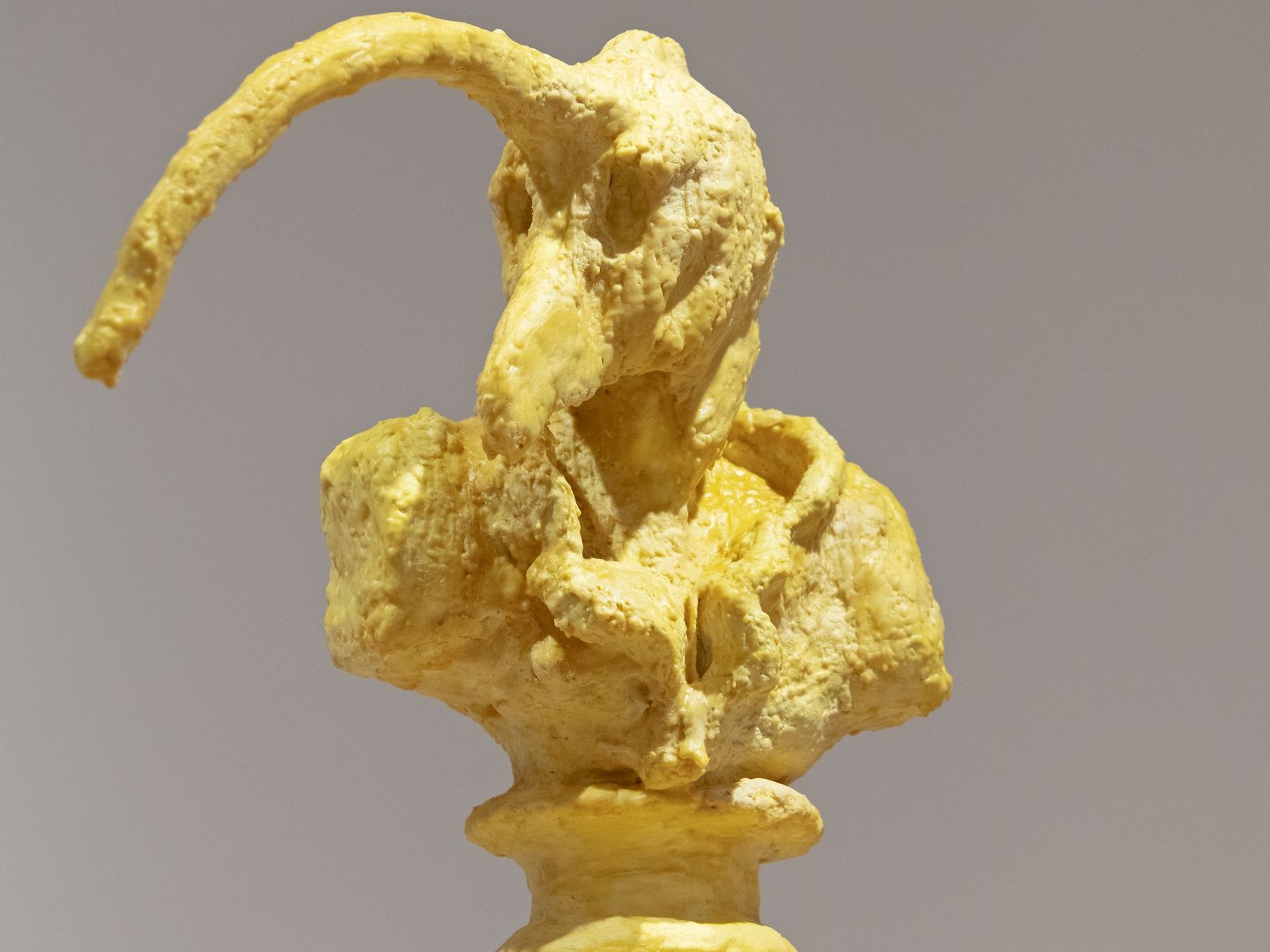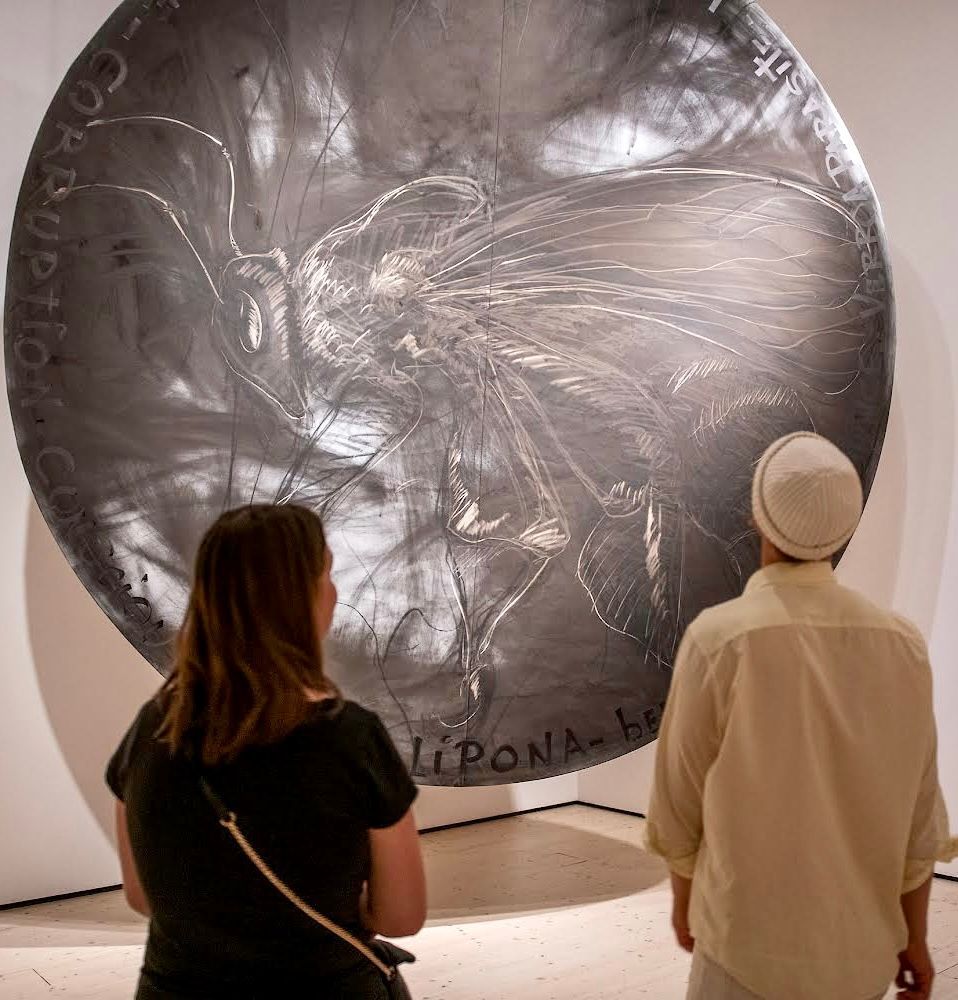Senses at the centre with Oswaldo Maciá
In the exhibition
“The Theatre of Energy: An Exploration in Three Acts”, Museum Anna Nordlander/MAN invites London-based sculptor Oswaldo Maciá to showcase works where the senses take center stage. The exhibition is being held at Sara Kulturhus in Skellefteå, Sweden from June 17 to September 17, 2023.
In a first room of the exhibition - bird busts and cartography
Three bird busts are presented on pedestals alongside large-scale charcoal drawings. The word bust originate from Italian busto, meaning upper body and from Latin bustum, as in funeral monument or tomb. The birds have been placed from a bird's eye view and are thus in a position to observe the human drama as it unfolds on Earth. The busts are made of plaster covered with local bee-wax. In this work, the artist pays homage to sculptures by Medardo Rosso.
The birds presented include the majestic military macaw (Ara militaris), the horned screamer (Anhima cornuta) and the sacred ibis (Threskiornis aethiopicus). The charcoal drawing contains the artist's own notes and observations on birds, insects and migratory wind routes as well as his thoughts on the ongoing extinction of plant diversity, where the bird busts come to act as monuments of their own vulnerable existence.
"The enormous charcoal drawings contribute to the visitor's spatial experience while also providing insight into the bodily and sensual power of language," says Cecilia Andersson, curator and executive director at MAN.
In the large exhibition room, cross-pollination a sound composition
Two round large-scale drawings are presented as a backdrop of the sound composition. Measuring four meters in diameter, the charcoal work on the left portray one of the 70 species of the Melipona bee, the pollinator of the vanilla orchid. Opposite, and in the same scale, is another charcoal work in sinopia, a dark reddish-brown natural earth pigment. Here the Vanilla planifolia or vanilla orchid is depicted. The vanilla orchid is a flowering plant genus of about 110 species and one of the most popular flavors in the world. At the center of the space, an octagonal sound composition is presented. Composed from the artist’s own library of sound, we hear a collection of insects, bird calls recoded in the rainforest of Chocó, Colombia and migratory wind recordings from different deserts such as the Artic, Atacama and New Mexico.
In the third room, scents
Here we are transported to the rainforest through the molecular messages of scents which function to metaphorically trace the history of colonization and follow the global migration of scents. Presented are the aroma of Balsam of Peru: a product of the Peru Balsam Tree, Myroxylon balsamum, extracted by skilled workers in the rainforest of El Salvador. The balsameros carefully scorch and cut away sections of bark while simultaneously fixing rags over the exposed sapwood. These repurposed materials, which might once have been a pair of jeans or a football shirt, absorb sap from the tree and are later pressed to extract the precious balsam. Maciá invites us to consider the smell of colonial history through this balsam, one of the first perfumes to cross the Atlantic. The medicinal and aromatic qualities of this scent have been celebrated since the time of the Maya. In the sixteenth century it became an important colonial export for European medicine and perfumery when Spanish colonialists shipped the balsam to Europe from Peru.
Challenges us to look closer
The exhibition's ambitious setup aims to raise questions about migration, colonization and extinction. What happens when local site-specific knowledge disappears, how does this affect the future conditions of the planet? Oswaldo Maciá's installations challenge our perception and the fact that we often privilege sight over other senses. “The artist's multisensory sculptures invite visitors to look closer, listen deeply and to engage all their senses. At the same time, we are encouraged to explore themes such as movement, memory, and history”, says Cecilia Andersson.
Thanks to Nelixia.












